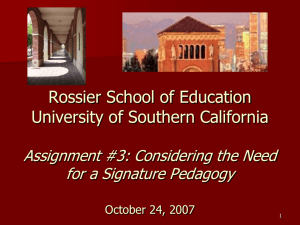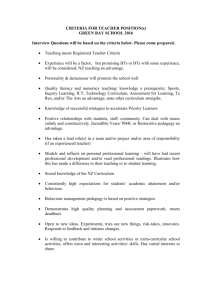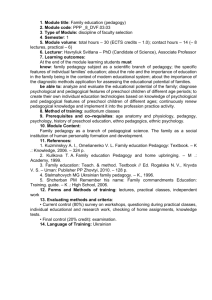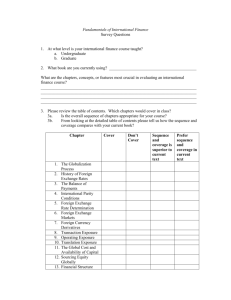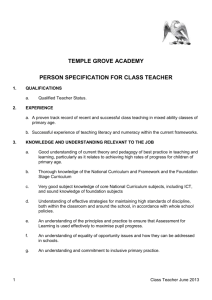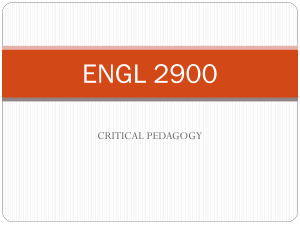File - Katey Bizzell
advertisement
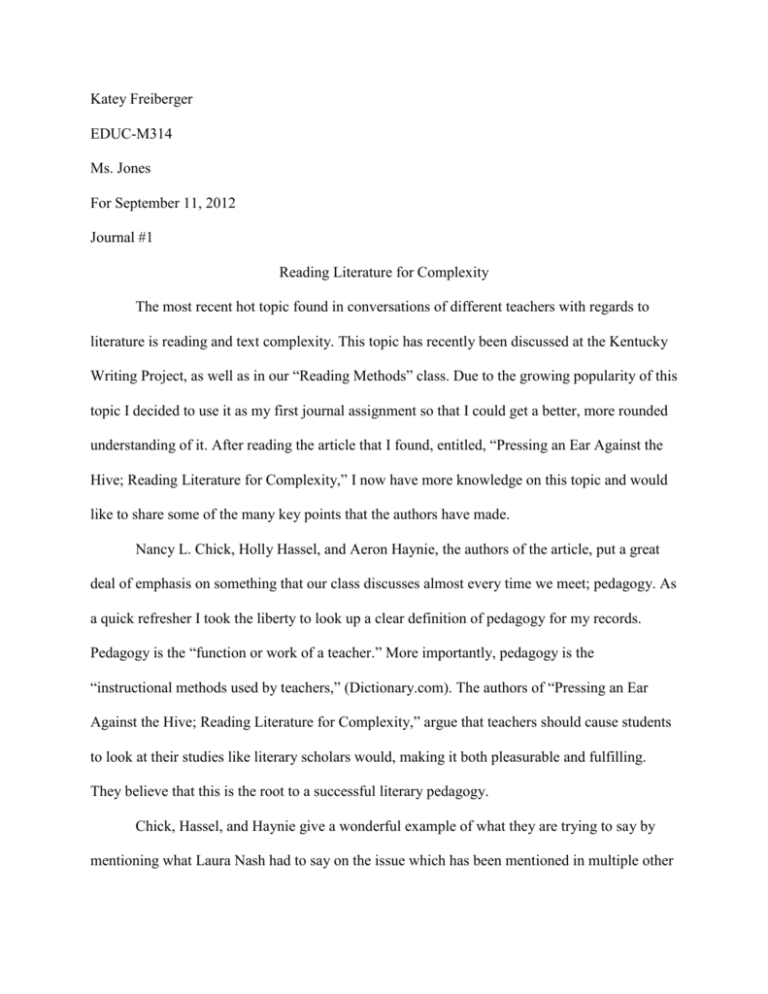
Katey Freiberger EDUC-M314 Ms. Jones For September 11, 2012 Journal #1 Reading Literature for Complexity The most recent hot topic found in conversations of different teachers with regards to literature is reading and text complexity. This topic has recently been discussed at the Kentucky Writing Project, as well as in our “Reading Methods” class. Due to the growing popularity of this topic I decided to use it as my first journal assignment so that I could get a better, more rounded understanding of it. After reading the article that I found, entitled, “Pressing an Ear Against the Hive; Reading Literature for Complexity,” I now have more knowledge on this topic and would like to share some of the many key points that the authors have made. Nancy L. Chick, Holly Hassel, and Aeron Haynie, the authors of the article, put a great deal of emphasis on something that our class discusses almost every time we meet; pedagogy. As a quick refresher I took the liberty to look up a clear definition of pedagogy for my records. Pedagogy is the “function or work of a teacher.” More importantly, pedagogy is the “instructional methods used by teachers,” (Dictionary.com). The authors of “Pressing an Ear Against the Hive; Reading Literature for Complexity,” argue that teachers should cause students to look at their studies like literary scholars would, making it both pleasurable and fulfilling. They believe that this is the root to a successful literary pedagogy. Chick, Hassel, and Haynie give a wonderful example of what they are trying to say by mentioning what Laura Nash had to say on the issue which has been mentioned in multiple other articles and books. She believes that teachers should, “break out of the frame,… direct logical questions, and most of all leave the students in perplexity, not in panic.” Unfortunately, students today have learned to hold back. When they are asked to give questions, they have been conditioned to answer them dryly and they often just shut down. The article includes the point that sometimes students don’t even bother to continue reading after this “shut down.” They simply seem to give up. So the question is then asked, how do we get students to value complexity? The remainder of the article tries to answer this question in as much detail as possible. In order to find a substantial answer, the three authors of the article, along with two other colleagues, performed a study. Bryan Kopp, one of the two extra professors, defined the idea of their method of study by saying that it is “a process in which a small group of teachers collaboratively plans, teaches, observes, revises, and reports results on a single class lesson.” It is important to mention that they are all from the University of Wisconsin; however, they are from different campuses. A total of sixty-five responses were taken after teaching the same lesson at two different campuses. Thirty-seven of the sixty-five interpreted the poem used in the lesson as expressive of the speakers love or possibly a form of abuse. These initial responses show the students trying to flatten the meaning behind the poem, similar to what I mentioned at the beginning of this journal. It is important to mention that the idea of violence showed more sophistication than the expression of love. In total, only three students out of the sixty-five identified more than one pattern, which showed more of a complex reading of the poem. As I draw this journal to a close, I would like to urge people from our class, as well as our professors to read this article. I found it to be extremely fascinating. The length of it made it difficult for me to include everything, but I tried to touch on things that stood out to me, including the study that the authors conducted. I plan to continue to look up more information on text complexity in the future, and encourage my fellow classmates to also take a look at the Kansas Department of Education for a little bit more information on the topic. References Chick, N. L., Hassel, H., & Haynie, A. (2009). Pressing an Ear against the Hive. Pedagogy, 9(3), 399-422. www.Dictionary.com
